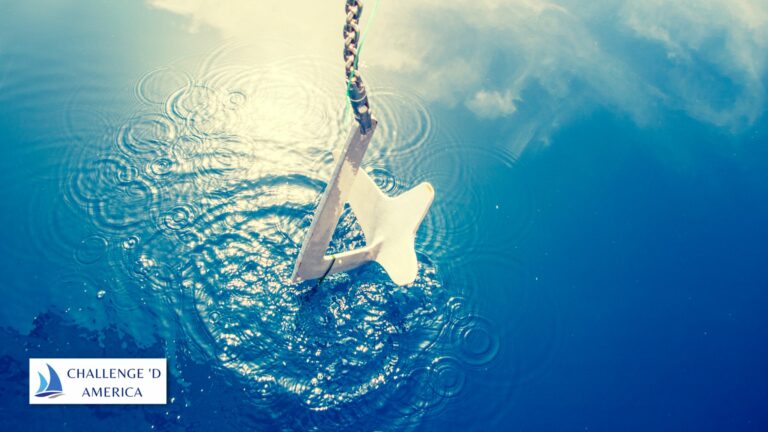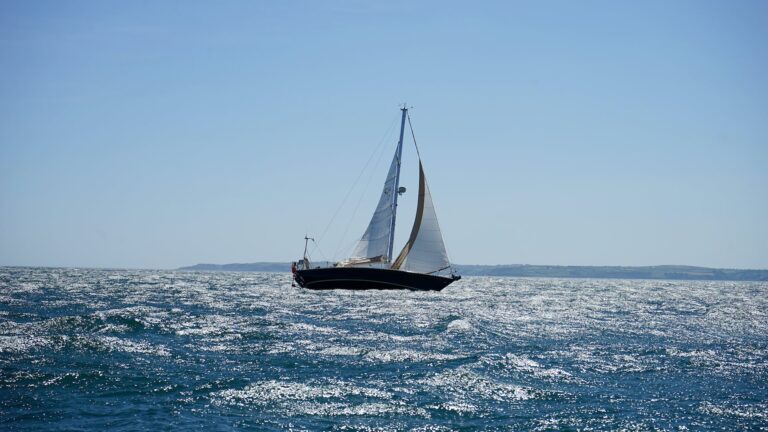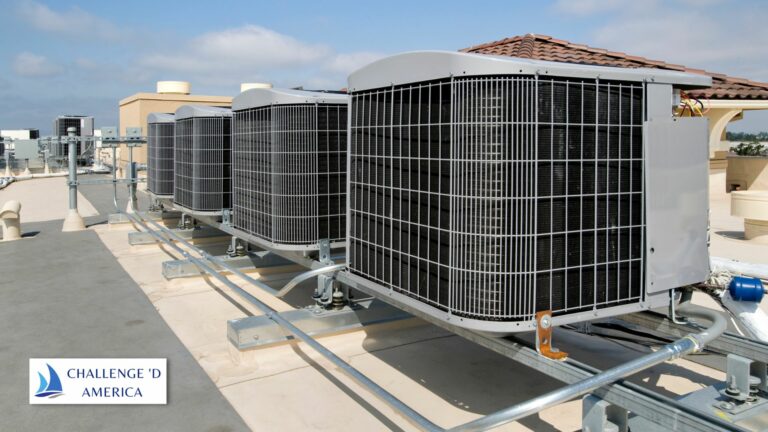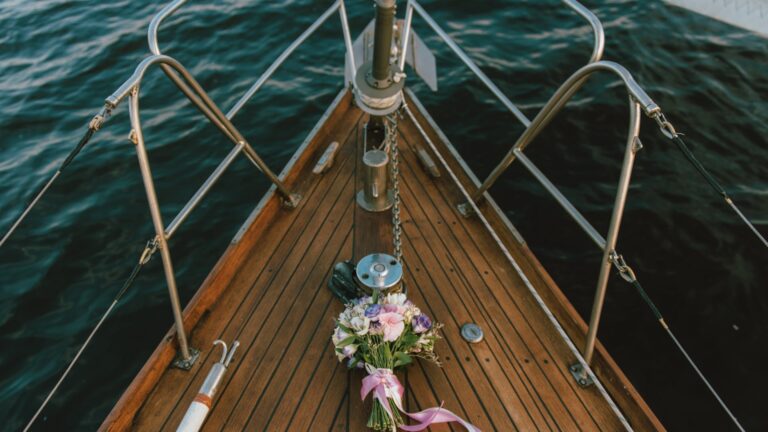How Can You Choose The Best Anchor For Your Sailboat Based On The Type Of Bottom And Conditions?
Ahoy mates! As an experienced sailor of many years, I know a thing or two about the importance of having the right anchor for your sailboat. It may seem like a small detail, but a good anchor is essential for ensuring a safe and secure journey.
Today, I’m going to be sharing my expert advice on how to choose the best anchor based on the type of bottom and conditions you’ll be sailing in.
Trust me, you don’t want to learn the hard way by losing your boat! In this article, I’m going to be discussing the various components of an anchor and which types are best suited to different sailing scenarios. So, batten down the hatches and let’s get started!
Factors To Consider When Choosing an Anchor
When choosing the best anchor for your sailboat, there are a variety of factors to consider, such as the type of bottom, the prevailing conditions and the size of your vessel.
First, you must consider the type of bottom your anchor needs to be matched to. Sand and mud bottoms require different anchor styles.
Sand bottoms are best suited to fluke-style anchors, such as the Danforth or Delta, while mud bottoms are best suited to a ‘plow-style’ anchor, such as a Manson or Rocna.
Second, you must consider the prevailing conditions. If you spend your time sailing in a variety of locations and conditions, you may want to opt for a ‘multi-purpose’ anchor such as a Spade or Bulwagga.
These anchors are designed to perform effectively in a variety of conditions and bottom types. However, if you tend to sail in consistent conditions and a single bottom type, you may want to opt for a specific anchor to suit those conditions.
Finally, you must consider the size of your vessel. As a general rule of thumb, the larger your boat, the larger the anchor you will need.
However, the size of the anchor must also be matched to the bottom type, the prevailing conditions and the size of your boat.
It is important to ensure that the anchor you choose is of the correct size and weight to ensure that it can provide optimal anchoring performance for your vessel.
When selecting an anchor, it is essential to consider all of these factors as they will play a significant role in determining the best anchor for your sailboat.
With some research and informed decision making, you can be sure to choose the best anchor for your vessel and its sailing conditions.
A. Bottom Type
When selecting an anchor for a sailboat, one of the key factors to consider is the type of bottom that the boat will be anchoring in. Generally, when anchored in a sandy surface, a lightweight, long shank anchor is best as it penetrates easily.
Alternatively, if the anchor will be set in a rocky, or weedy surface, a heavier anchor or one with a wider fluke area should be used to give a greater holding power.
Additionally, a mushroom anchor can be used for weedy or muddy bottoms, as it ‘resets’ easily and is extremely effective in these conditions.
For boats in permanent mooring, a reliable, heavy anchor, such as a plow-type or Bruce anchor, is recommended as these provide a great deal of holding power and are economical to use.
Additionally, it is important to consider the sea conditions. In areas with strong currents, it is important to use a heavier anchor that can dig into the bottom and resist the force of the current.
1. Sand
When it comes to choosing the best anchor for your sailboat, sand is a great bottoming material to consider. Sand is the most common type of bottom, so it is important to choose an anchor that will hold firmly on this type of substrate.
Anchors designed for sand tend to have more pointed designs that penetrate easily into the sediment. Additionally, large flukes will help to set the anchor quickly and hold it firmly in place.
When anchoring in sand, it is important to ensure the anchor is lodged deeply enough to be effective. To achieve this, you should use a longer anchor rode than you would in other types of bottoms. This will provide the necessary scope to ensure the anchor is securely dug in.
When selecting your anchor, it is important to research the manufacturer and the particular anchor to ensure they are suitable for a sandy bottom. If the anchor has wide flukes, it may become buried in the sand and be difficult to retrieve once the wind has shifted or the tide has changed.
By choosing the right anchor and following best practice anchoring techniques, you can be sure that your boat is securely held in place, even in sandy bottoms.
2. Mud
When anchoring in mud, a highly effective anchor is needed. The best anchor for mud is a fluke-style anchor, such as a Fisherman or Bruce anchor. These anchors feature two or more flukes which dig into the mud, making them incredibly secure.
When setting an anchor in mud, the anchor should be set at a 45-degree angle, and you may need to drive the anchor deeper into the mud to ensure it’s secured.
These anchors are also relatively lightweight, so are easier to store and handle. However, if you’re anchoring in particularly thick mud, a more robust anchor may be necessary.
In this case, a plow-style anchor, such as a Danforth or CQR, is the best choice. These anchors are heavier, but feature more flukes than fluke-style anchors, so they hold better in thicker mud.
When choosing an anchor for mud, it’s important to select an anchor with a good fluke angle. A fluke angle of 45 degrees is ideal, as this will increase the anchor’s ability to dig into the mud and hold.
Additionally, the anchor you choose should have a strong shank, as this will help to ensure that the anchor is able to handle the force of being pulled up from the bottom.
3. Gravel
Gravel is a common type of bottom encountered by sailors, and it requires a different type of anchor. The ideal anchor for a gravel bottom is one with a wide fluke that can dig into the gravel and hold the boat in place. These types of anchors typically include a claw anchor, a grapnel anchor, or an anchor with a plow.
When anchoring in a gravel bottom, it is important that the anchor is properly set. This means ensuring it has a good bite into the gravel and that the boat is not riding over the anchor.
To achieve this, it is recommended that the anchor is retreived and re-set multiple times, if necessary. The anchor rode should also be adjusted, based on the amount of scope and the size of the swell.
It is also important to note that the anchor should be properly sized for the boat. A small anchor won’t provide sufficient holding power, and a larger anchor might not set properly in the bottom. Therefore, it is important to consider the size of the boat and the bottom conditions when selecting the right anchor for a gravel bottom.
4. Rock
When anchoring on rocky bottoms, it is important to choose an anchor that can be heavily loaded, as the rock is often unforgiving and can cause damage to the anchor and the boat.
The most widely accepted anchor for anchoring on rocky bottoms is the plough or ‘CQR’ anchor. Its shape is designed to ‘plough’ through the rocks, digging in and providing a secure hold. The CQR is also designed to self-release, so if the boat drifts, it should be able to pull out of the seabed.
Other anchors that can be used on rocky bottoms are the Bruce anchor, the Delta anchor and the Claw anchor. The Bruce anchor is suitable for heavier boats and the Claw anchor is good for boats with a lower weight and smaller size. The Delta anchor is based on the CQR and has a narrower point and a longer shank, making it more suitable for rocky bottoms.
Generally, when anchoring on a rocky bottom, a heavier anchor is required, as the pulling force needs to be enough to break through the rocks.
It is also important to set the anchor correctly and use plenty of scope to ensure that it is securely and safely set. In strong winds, more scope may be needed due to the extra pull on the anchor.
B. Water Depth
When considering the best type of anchor for your sailboat, it is important to consider the depth of the water where you will be sailing. Generally, anchors such as plough, claw, or fluke anchors can be used on sandy, clay, or mixed bottoms in waters that are greater than 20 feet deep. If the water is shallower, a Danforth or Bruce anchor may be a better choice.
For rocky or hard bottoms that require a penetrating anchor, it is best to use a CQR, Delta, or Bruce anchor.
These anchors are designed to set, or penetrate, into the bottom of the ocean, lake, or river. They are ideal for anchoring in deep waters or in locations with tidal currents, as they are designed to hold firmly in deeper depths.
Finally, for areas with muddy bottoms, a mushroom, grapnel, or sand spike anchor is ideal. These anchors are designed to dig into the bottom of the water, creating a more secure hold.
The size of the anchor you choose should be based on the size of your sailboat. Before selecting an anchor, it is important to consult your local sailing expert for guidance.
C. Wind And Wave Conditions
When choosing an anchor for your sailboat, it is also important to consider the wind and wave conditions you may be sailing in.
If you are sailing in areas with strong winds and high waves, you should use a heavier anchor which will have more holding power. On the other hand, lighter anchors are more suitable in areas with light winds and low waves.
For boats sailing in areas with sandy bottoms, a delta or a plow type anchor are good choices, as these anchors have large flukes that allow them to dig into the sand, providing excellent holding power.
For boats sailing in areas with rocky bottoms, a claw or mushroom anchor is a better choice. These anchors have greater penetration power and can easily dig into the rocky bottom, providing a strong hold.
Lastly, for boats sailing in areas with muddy bottoms, a plow anchor is the best option. This anchor has a large flat fluke that allows it to sink into the mud and provide superior holding strength.
D. Boat Size
When selecting the best anchor for your sailboat, the size of your boat must also be taken into account. To determine the size of anchor required, the size of your boat should be considered in relation to the type of bottom and conditions. Generally speaking, the larger the boat, the larger the anchor needed to ensure a secure hold.
Small sailboats typically use a Danforth anchor, while larger boats may require a heavier anchor such as a Bruce or CQR style. The size of the anchor should be proportional to the size of the boat, as an anchor that is too large or too small can be ineffective.
For instance, a sailboat of 30ft in length may require an anchor of 45 lbs in weight, while a sailboat of 40ft may require a 60lb anchor.
In addition to this, the type of bottom must be taken into consideration in order to select the optimum anchor size. A soft mud bottom may require a heavier anchor than a rocky bottom, for instance.
When selecting the best anchor for your sailboat, it is essential to consider the size of your boat in relation to the type of bottom and conditions. By considering all of these factors, you can ensure that your anchor provides the necessary performance and a secure hold.
Tips For Choosing the Right Anchor
When it comes to choosing the right anchor for your sailboat, there are a few key tips to take into consideration.
Below are a few of the main factors that you should consider:
•The type of bottom: The type of bottom can affect the type of anchor you should use. If you are anchoring in sand, mud, or weeds, a plow-style anchor is generally the most effective. However, if you are anchoring in rock, coral, or hard bottom, then a claw anchor is usually your best option.
•Weight of the anchor: The size and weight of the anchor should be proportional to the size of your sailboat. A heavier anchor is more effective for larger boats, while a lighter anchor may be more suitable for smaller boats.
•Type of sailing: The type of sailing you are doing can also affect the type of anchor you should use. If you are cruising in areas with strong currents, a heavier anchor may be necessary. On the other hand, if you are sailing on flat water and calm conditions, a lighter anchor may be suitable.
•Scope: The scope of your anchor should be between 1:5 and 1:7. This means that the length of the rode should be at least five to seven times the depth of the water.
•Anchor windlass: You will also want to make sure that you choose an anchor that is compatible with your boat’s anchor windlass.
By considering these key tips, you should be able to choose the best anchor for your sailboat based on the bottom conditions and your specific sailing needs.
A. Consider The Type Of Bottom
The type of bottom, or substrate, of the water you sail in is a key factor in choosing the right anchor. Different anchors perform better in certain substrate types.
Sandy, muddy, and gravel bottoms have different holding power characteristics, so it is important to take into account what kind of bottom your sailing water has.
In sandy bottoms, generally a fluke-style anchor will provide the best holding power. The curved shape of the fluke digs into the sand, providing a secure hold.
In mud and clay bottoms, a claw-style anchor is typically the best choice. The claw-style anchor can penetrate the muck and mud better than other types of anchors.
In gravel bottoms, a plow-style anchor is the most effective. Generally, a plow-style anchor has the greatest weight-to-holding power ratio, making it a great choice for gravel bottoms.
For anchoring in a rocky bottom, a mushroom-style anchor is the best option. Mushroom anchors dig into the crevices and cracks of the rocks, creating a secure hold.
Finally, for anchoring in coral or grass, a grapnel-style anchor should be used. The grapnel-style anchor is designed to grab onto any type of surface and works particularly well in grass and coral.
Each type of bottom will affect the holding power of the anchor, so it is important to take into account all variables before choosing the right anchor for your boat.
B. Consider The Water Depth
When selecting an anchor for your sailboat, it is important to consider the water depth of the anchorage. In general, the deeper the water, the heavier the anchor required.
As the weight of the anchor increases, the more holding power it will have. The anchor’s fluke size, or the part of the anchor that digs into the bottom, should also be taken into account when choosing the right anchor for your boat. In general, the fluke size should be large enough for the boat in order to provide sufficient holding power.
The water depth should also be considered when sizing your rode, or line connecting the boat to the anchor. The depth of the water will determine the amount of length of rode you need.
The more rode you have, the better the anchor will hold, especially in deeper water. As a general rule, a minimum of three times the depth of the water should be used for the rode. For example, if the water is 10 ft deep, you should use a minimum of 30 ft of rode.
Finally, the type of bottom should also be taken into account when selecting an anchor. Soft mud bottoms, for example, require an anchor with larger flukes and more weight than an anchor used in a sandy bottom.
It is important to select an anchor that best suits the conditions and type of bottom in order to ensure the best holding power.
C. Consider The Wind And Wave Conditions
When selecting the best anchor for your sailboat, it is important to consider the wind and wave conditions. To determine the right anchor for your sailboat, you need to consider the wind direction and the wave height.
A larger anchor is often needed in heavy wind and wave conditions, while smaller anchors may be suitable in more mild conditions.
For windy conditions, the anchor must be strong enough to withstand the high tension generated. In windy conditions, a plow anchor is often recommended as it is designed to dig into the bottom and resist the force of the wind. The Claw anchor also performs well in windy conditions, as it is designed to grip the bottom and resist the wind forces.
For wave conditions, a fluke or mushroom anchor can be beneficial as they are designed to hold well in moderate depths. These types of anchors are also good for use in sand or mud bottoms and are less likely to become dislodged in strong wave conditions.
When selecting the right anchor, it is important to consider both the wind and wave conditions. A combination of an appropriate size and type of anchor can help ensure that your sailboat is securely anchored in a wide range of conditions.
D. Consider The Size Of Your Boat
When selecting the best anchor for your sailboat, it’s important to consider its size. Generally, a larger boat will require a heavier anchor, so the size of your vessel is a key factor.
A larger anchor is going to give your boat more of a grip on the seabed. Smaller boats will usually require a lighter anchor, since a larger anchor could be too heavy and could damage the hull of your vessel.
Additionally, a longer rode – the length of rope or chain connected to the anchor – is recommended for larger boats, as the extra length gives you more scope and helps to keep your boat in place when the conditions are changeable.
When it comes to rode length, a good rule of thumb is to use a scope ratio of 5:1, meaning five times the depth of the water. For example, if you’re anchoring in 10 meters of water, the rode should be 50 meters in length.
Finally, the size of your boat may also determine the type of anchor you choose. Smaller vessels may benefit from a Danforth-style anchor, which is lightweight and has a wide fluke area, providing a good holding power-to-weight ratio.
Larger boats may require a Rocna or Manson anchor, which is designed for heavier vessels and offers superior performance in a variety of conditions.
Summary: How Can You Choose The Best Anchor For Your Sailboat Based On The Type Of Bottom And Conditions?
As a sailing expert, I know that choosing the right anchor for your sailboat is essential to ensure the safety of your vessel. Different types of anchor work best in different bottom types and conditions.
Generally, a lightweight anchor should be used in soft bottoms, such as mud, sand, and grass. In harder bottoms, such as rock or gravel, a heavy anchor is recommended.
Additionally, a plow anchor or a mushroom anchor can provide adequate holding power in deep water or in areas with strong currents.
Finally, if you are sailing in an area with a lot of wind, a Bruce or Danforth anchor should provide you with the best holding power and stability.
All these types of anchors have their advantages, and by making an informed decision based on the conditions, you can rest assured that your boat and crew are well protected.
FAQs
What Type Of Anchor Is Best Suited For Your Sailboat’s Bottom and Conditions?
When it comes to selecting the best anchor for your sailboat, there are a few things to consider: the type of bottom, the conditions, and the size of the anchor.
For bottom types, a standard anchor should work well in most situations. However, if you are sailing in areas with thick mud, grass, or heavy weeds, a claw-style anchor might be a better choice.
For conditions, a heavier anchor should be used if you are sailing in high winds or deep water, as this will provide better holding power.
Lastly, the size of the anchor should be appropriate for the size of your sailboat, as smaller anchors may not provide enough holding power.
All in all, the best anchor for your sailboat will depend on the type of bottom and the conditions you are sailing in.
How Much Scope Should You Use When Anchoring?
When it comes to anchoring, the amount of scope you should use really depends on the type of bottom and conditions you’re dealing with.
Generally speaking, the more scope you use the better. Generally, a scope ratio of 5:1 is considered a minimum; however, in certain conditions, you may need to use a higher scope ratio such as 7:1 or even 10:1.
If you’re dealing with a rocky bottom, a higher scope ratio is ideal as it will help reduce strain on the anchor and the rode. Additionally, in areas with strong currents, a higher scope ratio can help prevent the anchor from dragging. In areas with light winds, a lower scope ratio may be used.
In addition to the type of bottom you’re dealing with, the size of your boat is another factor to consider. Generally, the larger your boat, the more scope you’ll need. The size of the anchor and the rode are also important. The heavier the rode, the more scope you’ll need.
In summary, the amount of scope you should use when anchoring really depends on the type of bottom, conditions, and size of your boat. To ensure your anchor is securely set, always use a minimum of a 5:1 scope ratio, and adjust accordingly depending on the conditions.
What Type Of Rode Should You Use With The Anchor?
When choosing an anchor for a sailboat, the type of rode used should be based on the type of bottom and conditions the boat will be sailing in. It is important to consider the type of rode as this will determine the holding capability of the anchor.
If the bottom is composed of sand or mud, then a chain rode should be used. Chain rodes offer greater holding power than other types of rode and can help prevent the anchor from dragging or resetting in these types of bottoms.
If the bottom is composed of rock, coral, or other hard surfaces, then a rope rode should be used. A rope rode will provide greater shock absorption and reduce the risk of the anchor damaging the bottom.
In areas with a high tidal range, a combination of rope and chain rode should be used. This type of rode will provide the best of both worlds as the chain provides greater holding power and the rope absorbs shock and prevents the anchor from damaging the bottom.
In areas with strong currents, a rope rode should be used. A rope rode will provide greater shock absorption in these conditions and help to prevent the anchor from dragging or resetting.
No matter what type of bottom or conditions the sailboat will be sailing in, it is important to choose an anchor and rode that will provide the best possible holding power. This will ensure the boat remains in place and can be safely retrieved when needed.
How Should You Store The Anchor When Not In Use?
When not in use, it is important to store your anchor in a dry, ventilated area. This will help protect the anchor from corrosion, and prolong its lifespan.
If possible, use a net or other storage device to hang your anchor, as this will help reduce the amount of wear and tear on the anchor.
Additionally, be sure to rinse and dry your anchor thoroughly before storing it away, as this will help prevent rust and other damage.
If you have the space, you may even want to hang the anchor from a rafter or other support system, in order to provide additional protection. Ultimately, proper storage of your anchor is essential to ensure that it is ready to use when you need it.
What Type Of Maintenance Is Required For The Anchor?
As a sailing expert with extensive knowledge of sailing, I can confidently say that the type of maintenance required for the anchor really depends on the type and condition of the bottom.
For instance, if you are sailing in mud or sand, a lighter weight anchor with a flat fluke design is best. This type of anchor requires less maintenance than an anchor with a scoop-type fluke as it is less likely to get clogged with debris.
For rocky bottoms, an anchor with a scoop-type fluke is best as it will provide a greater holding power. However, this type of anchor will require more frequent maintenance to keep it in top shape. This includes checking the anchor for any visible damage or wear, cleaning it of any dirt or debris, and greasing the shank to ensure that it moves freely in the gypsy.
Finally, if you are sailing in a grassy bottom, a scoop-type anchor with a kelp cutter is best. This type of anchor requires periodic maintenance to keep it free of grass and other vegetation. A good practice is to inspect the anchor after each use and clean it of any debris and vegetation.
No matter what type of bottom you are sailing in, it is important to inspect the anchor regularly and perform any necessary maintenance. This will ensure your anchor remains in top condition and provides maximum holding power.







